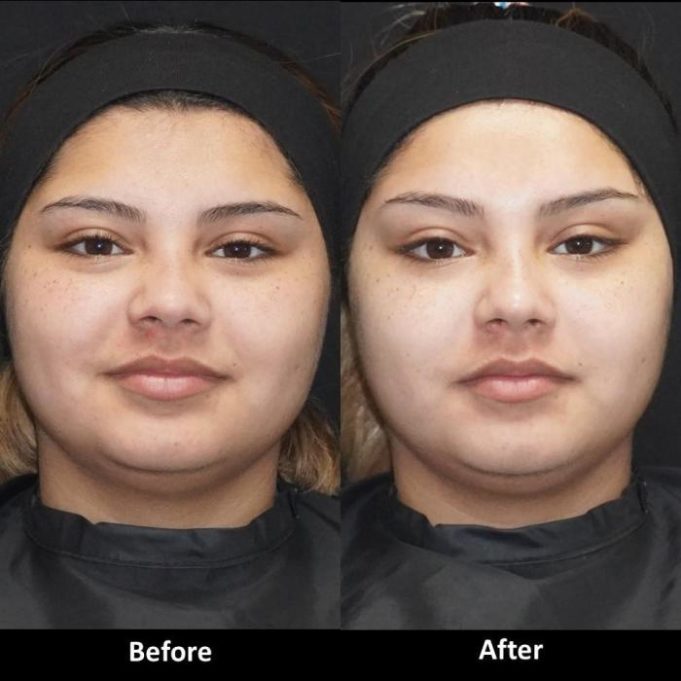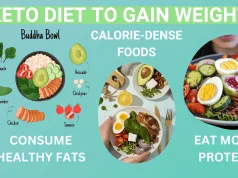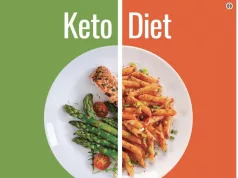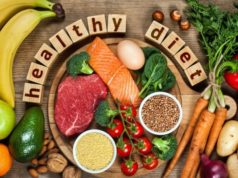How to lose weight in your face is a question many people ask, especially those seeking a more defined and youthful appearance. While spot reduction is a myth, targeting facial fat loss is possible through a combination of lifestyle changes, targeted exercises, and professional treatments.
Understanding the difference between subcutaneous and visceral fat in the face, the role of genetics, and common areas where facial fat tends to accumulate is crucial. By implementing a balanced diet, incorporating regular exercise, and prioritizing adequate sleep and stress management, you can effectively reduce overall body fat, which will positively impact facial fullness.
Understanding Facial Fat
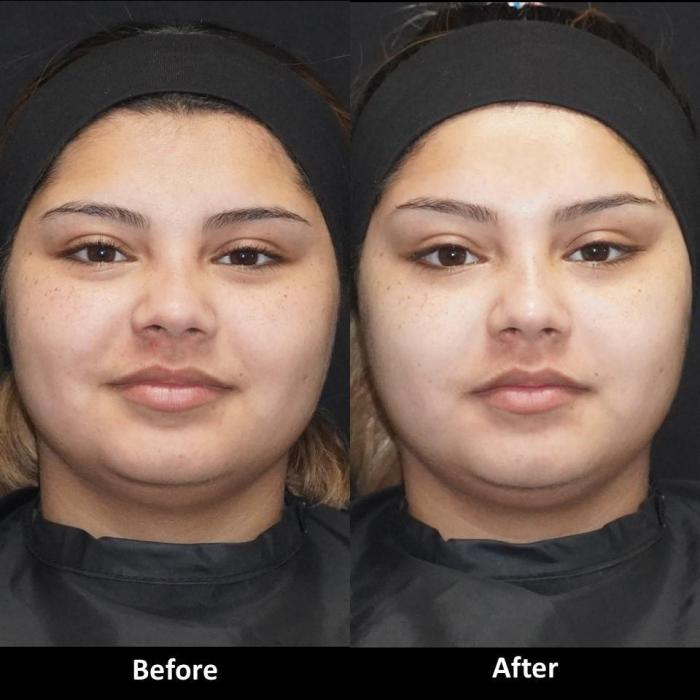
Understanding where facial fat comes from is crucial to developing a targeted approach for weight loss in the face. Facial fat, like fat in other areas of the body, can be classified into two main types: subcutaneous fat and visceral fat.
Subcutaneous and Visceral Facial Fat
Subcutaneous fat is the fat layer that sits just beneath the skin. It is the type of fat that you can pinch and feel. Visceral fat, on the other hand, is located deeper within the body, surrounding vital organs like the heart and liver.
While both types of fat can contribute to facial fullness, subcutaneous fat is the primary contributor to the appearance of a rounder face.
Genetics and Facial Fat Distribution
Genetics plays a significant role in determining where fat tends to accumulate in the body, including the face. Some people are genetically predisposed to storing more fat in their face, while others may have a more even distribution of fat throughout their body.
This genetic predisposition is often influenced by factors such as ethnicity, family history, and overall body composition.
Common Areas of Facial Fat Accumulation
Facial fat accumulation is often observed in specific areas, including:
- Cheeks:This is a common area for subcutaneous fat to accumulate, giving the face a rounder appearance.
- Chin:A double chin can be caused by both subcutaneous and visceral fat accumulation.
- Jowls:These are the fleshy areas that hang below the jawline and are primarily composed of subcutaneous fat.
Lifestyle Modifications for Facial Fat Reduction
While there’s no magic bullet for spot reduction, adopting healthy lifestyle habits can significantly reduce overall body fat, including facial fat. By incorporating these changes, you can work towards a leaner, healthier you.
Regular Exercise
Regular physical activity plays a crucial role in burning calories and reducing overall body fat. It also helps improve your metabolism and increase your body’s ability to burn fat more efficiently.
- Cardiovascular Exercise:Activities like running, swimming, cycling, or brisk walking elevate your heart rate and burn a significant number of calories. Aim for at least 30 minutes of moderate-intensity cardio most days of the week.
- Strength Training:Resistance training helps build muscle mass, which increases your metabolism and helps you burn more calories even at rest. Include exercises like squats, push-ups, lunges, and weightlifting in your routine.
- High-Intensity Interval Training (HIIT):This involves short bursts of intense exercise followed by brief rest periods. HIIT is an effective way to burn calories and improve cardiovascular fitness in a shorter amount of time.
Balanced Diet
A balanced diet is essential for overall health and weight management. Focus on consuming nutrient-rich foods while limiting processed foods, sugary drinks, and excessive salt intake.
While spot reduction isn’t possible, losing weight overall can help slim down your face. This means adopting healthy habits like eating a balanced diet and exercising regularly. If you’re new to weight loss, check out How to lose weight for beginners for some helpful tips.
Remember, consistency is key when it comes to weight loss, and with time and effort, you’ll start to see a difference in your face as well.
- Fruits and Vegetables:Packed with vitamins, minerals, fiber, and antioxidants, these foods are low in calories and can help you feel full. Aim for at least five servings per day.
- Lean Protein:Include sources like chicken, fish, beans, lentils, and tofu in your diet. Protein helps maintain muscle mass and keeps you feeling satiated.
- Whole Grains:Choose whole-grain breads, cereals, and pasta over refined grains. They are rich in fiber, which aids digestion and helps control blood sugar levels.
- Healthy Fats:Incorporate sources like avocados, nuts, seeds, and olive oil into your diet. These fats provide essential nutrients and can help regulate hormone levels.
- Limit Processed Foods:These foods are often high in calories, unhealthy fats, sugar, and sodium. Opt for whole, unprocessed foods whenever possible.
- Reduce Sugary Drinks:Sugary drinks like soda, juice, and sweetened coffee contribute to weight gain and can negatively impact your health. Choose water, unsweetened tea, or sparkling water instead.
Adequate Sleep and Stress Management
Getting enough sleep and managing stress are essential for weight loss and overall health. When you’re sleep-deprived or stressed, your body produces more cortisol, a hormone that can lead to fat storage, particularly in the face.
Targeting facial fat loss requires a holistic approach. While spot reduction isn’t possible, adopting healthy habits can help you lose weight overall, which in turn can reduce facial fullness. Check out this comprehensive guide on how to lose weight and keep it off for good , which includes tips on diet, exercise, and lifestyle changes.
Remember, sustainable weight loss leads to a slimmer face and a healthier you.
- Aim for 7-8 hours of sleep per night:This allows your body to repair and rejuvenate, helping regulate hormone levels and promote healthy weight management.
- Practice stress-reducing techniques:Activities like yoga, meditation, deep breathing exercises, or spending time in nature can help reduce stress levels and promote relaxation.
Facial Exercises and Techniques
Facial exercises are a popular method for improving facial appearance and reducing facial fat. These exercises work by targeting specific facial muscles, promoting muscle strength, and potentially contributing to a more toned and sculpted look. While the effectiveness of facial exercises for fat reduction is still under debate, they can be a safe and enjoyable way to enhance facial muscle tone and potentially contribute to a more defined appearance.
Facial Exercises
Facial exercises involve repetitive movements that engage specific facial muscles. They are often used to strengthen and tone these muscles, which can contribute to a more defined facial contour. Here is a table outlining some common facial exercises:
| Exercise | Targeted Muscles | Description | Frequency and Duration | Illustration |
|---|---|---|---|---|
| Cheek Lifter | Cheek muscles (zygomaticus major and minor) | Smile widely, lifting the corners of your mouth towards your ears. Hold for 5 seconds, then relax. | Repeat 10-15 times, 2-3 times a day. | Imagine smiling broadly, with your cheeks lifted towards your ears, holding this position for a few seconds. |
| Chin Lifter | Chin muscles (mentalis) | Push your lower jaw forward, as if you are trying to touch your lower lip to your nose. Hold for 5 seconds, then relax. | Repeat 10-15 times, 2-3 times a day. | Imagine pushing your lower jaw forward, aiming to touch your lower lip to your nose, holding this position for a few seconds. |
| Forehead Smoother | Forehead muscles (frontalis) | Raise your eyebrows as high as you can, then slowly lower them back down. | Repeat 10-15 times, 2-3 times a day. | Imagine lifting your eyebrows as high as possible, then slowly returning them to their normal position, repeating this movement several times. |
| Lip Pucker | Lip muscles (orbicularis oris) | Pucker your lips as if you are about to kiss someone. Hold for 5 seconds, then relax. | Repeat 10-15 times, 2-3 times a day. | Imagine puckering your lips, as if you were about to kiss, holding this position for a few seconds. |
| Neck Stretch | Neck muscles (sternocleidomastoid and trapezius) | Tilt your head back, looking up at the ceiling. Hold for 5 seconds, then relax. Repeat on the other side. | Repeat 10-15 times, 2-3 times a day. | Imagine tilting your head back, looking straight up at the ceiling, holding this position for a few seconds, and then repeating on the other side. |
| Fish Face | Cheek and lip muscles (buccinator and orbicularis oris) | Suck in your cheeks and lips, making a fish face. Hold for 5 seconds, then relax. | Repeat 10-15 times, 2-3 times a day. | Imagine sucking in your cheeks and lips, creating a “fish face” expression, holding this position for a few seconds. |
Benefits and Limitations of Facial Exercises
Facial exercises can potentially contribute to a more defined and sculpted appearance by strengthening and toning facial muscles. They may also improve blood circulation and lymphatic drainage, potentially leading to a healthier and more youthful-looking complexion. However, it is crucial to understand that facial exercises are not a guaranteed solution for reducing facial fat.
Targeting facial fat loss can be tricky, but it’s all about a healthy approach. You can’t spot reduce, but overall weight loss will naturally slim your face. This involves incorporating a balanced diet and regular exercise, which can be achieved without feeling deprived.
For tips on how to lose weight without starving yourself, check out this helpful guide: How to lose weight without starving yourself. By focusing on sustainable weight management, you’ll see positive changes in your face and overall body composition.
While they can strengthen and tone muscles, they do not directly target fat cells. Additionally, the effectiveness of facial exercises for fat reduction is still under debate, and further research is needed to fully understand their impact on facial fat.
Facial Massage
Facial massage is a technique that involves applying gentle pressure and strokes to the face, often using oils or creams. It is believed to promote blood circulation, lymphatic drainage, and muscle relaxation.
Facial massage is thought to enhance blood flow, delivering oxygen and nutrients to the skin, potentially contributing to a more youthful and radiant complexion.
Facial massage can also help to relieve tension and stress in the facial muscles, which can contribute to a more relaxed and youthful appearance. While there is limited scientific evidence to support the effectiveness of facial massage for fat reduction, it can be a relaxing and enjoyable practice that may contribute to overall facial well-being.
Professional Treatments for Facial Fat Reduction: How To Lose Weight In Your Face
If you’re looking for more immediate and dramatic results, professional treatments can be a viable option. These treatments utilize various technologies to target and reduce facial fat, often offering quicker results than lifestyle changes alone. However, it’s crucial to understand the risks, costs, and effectiveness of these procedures before making a decision.
Non-Invasive Facial Fat Reduction Procedures
These procedures are generally considered safe and effective, but it’s important to consult with a qualified medical professional to determine if they are right for you.
- Facial Contouring:This procedure involves using a combination of techniques, such as radiofrequency, ultrasound, and lasers, to sculpt and contour the face. The treatments work by stimulating collagen production, tightening the skin, and reducing fat cells.
- Radiofrequency Therapy:Radiofrequency therapy uses heat to stimulate collagen production and tighten the skin. This can help to reduce the appearance of wrinkles and sagging skin, and may also help to reduce facial fat.
- Ultrasound Treatments:Ultrasound treatments use sound waves to target and destroy fat cells. This can help to reduce the appearance of jowls, double chin, and other areas of facial fat.
Risks and Side Effects of Non-Invasive Facial Fat Reduction Procedures, How to lose weight in your face
While generally considered safe, these procedures can have some potential side effects, including:
- Redness and Swelling:This is a common side effect that usually subsides within a few days.
- Pain or Discomfort:Some patients may experience mild pain or discomfort during or after the procedure.
- Bruising:Bruising is also a common side effect, but it typically resolves within a week or two.
- Skin Irritation:In some cases, patients may experience skin irritation or dryness.
Cost, Effectiveness, and Recovery Time of Non-Invasive Facial Fat Reduction Procedures
| Procedure | Cost | Effectiveness | Recovery Time |
|---|---|---|---|
| Facial Contouring | $500
| Moderate to high | 1-2 weeks |
| Radiofrequency Therapy | $200
| Moderate | 1-2 days |
| Ultrasound Treatments | $500
| High | 1-2 weeks |
Maintaining Facial Slimness
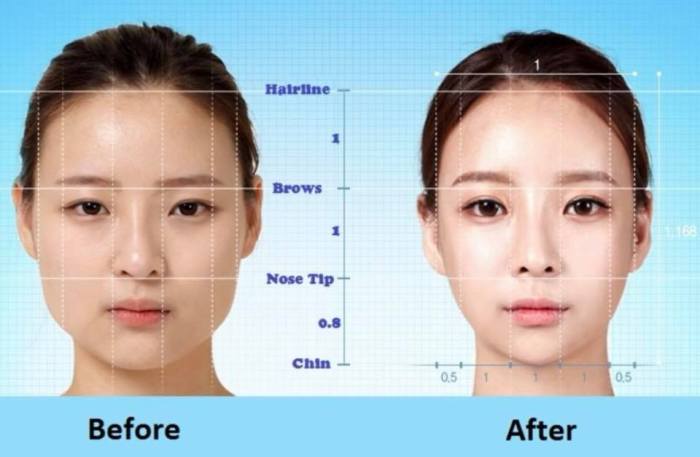
Once you’ve achieved your desired facial slimness, it’s crucial to maintain your progress and prevent future fat accumulation. This involves adopting healthy habits and making lifestyle changes that support long-term weight management.
Maintaining a Healthy Weight
Maintaining a healthy weight is essential for preventing facial fat accumulation. This involves consuming a balanced diet and engaging in regular physical activity.
- Balanced Diet:Prioritize whole foods, such as fruits, vegetables, lean protein, and whole grains. Limit processed foods, sugary drinks, and unhealthy fats. Focus on portion control and mindful eating habits.
- Regular Physical Activity:Aim for at least 150 minutes of moderate-intensity aerobic activity or 75 minutes of vigorous-intensity aerobic activity per week. Incorporate strength training exercises twice a week to build muscle mass, which helps boost metabolism and burn calories.
Sustainable Lifestyle Changes
Making sustainable lifestyle changes can help you maintain a healthy weight and reduce the risk of facial fat accumulation.
- Hydration:Drink plenty of water throughout the day to stay hydrated and boost metabolism. Aim for at least eight glasses of water per day.
- Sleep:Aim for 7-8 hours of quality sleep each night. Lack of sleep can disrupt hormones that regulate appetite and metabolism, leading to weight gain.
- Stress Management:Chronic stress can lead to weight gain, including facial fat accumulation. Practice stress-reducing techniques such as yoga, meditation, or spending time in nature.
Professional Consultation
Consulting with a healthcare professional can provide personalized advice and guidance for maintaining facial slimness.
- Nutritionist:A nutritionist can help you create a personalized meal plan that meets your individual needs and promotes weight management.
- Personal Trainer:A personal trainer can design a customized workout routine that targets your specific goals and fitness level.
Conclusive Thoughts
Achieving a slimmer face involves a multi-pronged approach that addresses both internal and external factors. By adopting a holistic approach that encompasses healthy habits, targeted exercises, and potentially professional treatments, you can work towards achieving your desired facial contour. Remember, consistency and patience are key to success.
Consult with a healthcare professional for personalized advice and guidance to ensure a safe and effective journey.
Quick FAQs
Can I lose weight in my face without losing weight overall?
While spot reduction is not possible, losing overall body fat will lead to a slimmer face. However, certain exercises and techniques can target facial muscles, improving tone and definition.
How long does it take to see results from facial exercises?
Consistency is key. You might notice subtle changes within a few weeks, but significant results typically take several months of regular practice.
Are there any natural remedies for reducing facial fat?
While some natural remedies like drinking plenty of water and consuming certain foods can contribute to overall health and well-being, they are unlikely to directly target facial fat loss.















